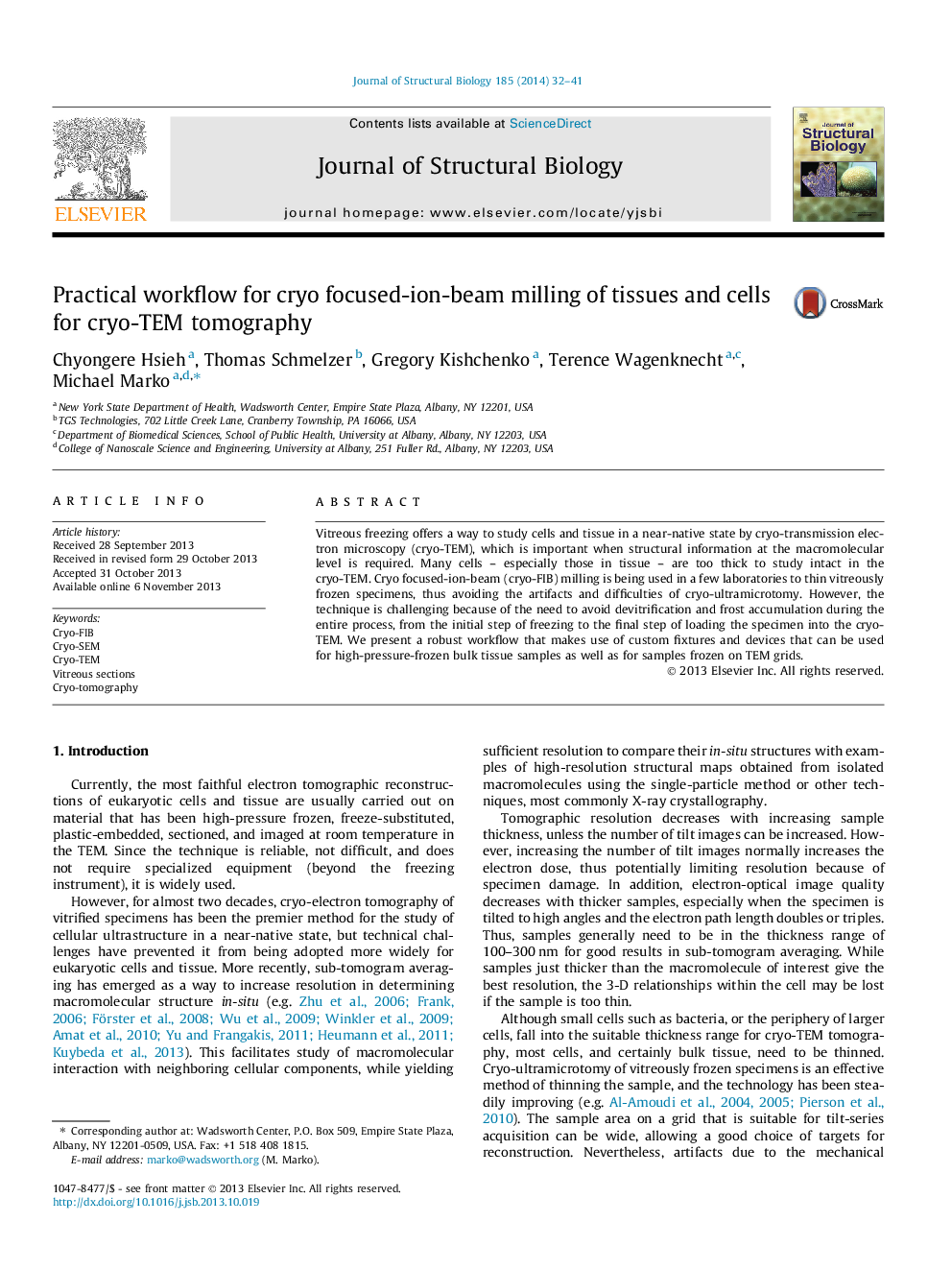| Article ID | Journal | Published Year | Pages | File Type |
|---|---|---|---|---|
| 5914193 | Journal of Structural Biology | 2014 | 10 Pages |
Vitreous freezing offers a way to study cells and tissue in a near-native state by cryo-transmission electron microscopy (cryo-TEM), which is important when structural information at the macromolecular level is required. Many cells - especially those in tissue - are too thick to study intact in the cryo-TEM. Cryo focused-ion-beam (cryo-FIB) milling is being used in a few laboratories to thin vitreously frozen specimens, thus avoiding the artifacts and difficulties of cryo-ultramicrotomy. However, the technique is challenging because of the need to avoid devitrification and frost accumulation during the entire process, from the initial step of freezing to the final step of loading the specimen into the cryo-TEM. We present a robust workflow that makes use of custom fixtures and devices that can be used for high-pressure-frozen bulk tissue samples as well as for samples frozen on TEM grids.
